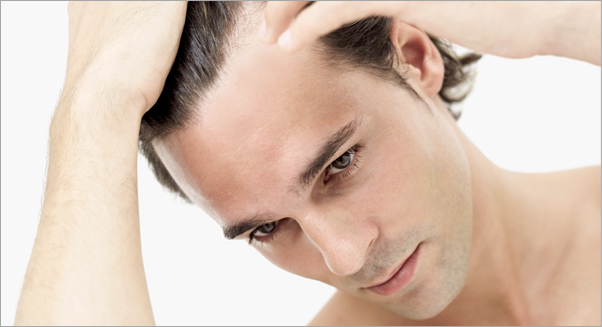Men And Their Hair Woes: The History Of Hair Loss Treatments

Millions of men suffer from hair loss around the globe. The condition doesn’t discriminate against age, and has plagued the gender since time immemorial. Androgenic alopecia, as it’s scientifically known, is the most common form of balding, and is a process that can be detrimental to the way people perceive themselves.
Thanks to science, however, there have been breakthroughs. Attempts to formulate the best solution have, however, ceded some pretty bad ideas in the history of hair loss treatment.
Even in the biblical times men suffered from baldness, with the prophet Elisha being bullied by kids because of his lack of hair. His solution was to apply bear grease to the affected areas. It didn’t yield any results, but the solution was still used well after he was dead and gone.
Men of the time believed that because bears were very furry, their grease would act as the best hair loss treatment. The only thing it could possibly have roused, however, was laughter from onlookers.
The wig dates back to as far as 1500 BC. It was used by the Egyptians to protect their shaved heads from the sun, and was later adapted by the Greeks and Romans. Even Julius Caesar used his laurel wreath as a toupee, and would comb his hair forward to hide his balding. It might have been better than bear grease, but windy gusts soon showed that it wasn’t the perfect solution.
The chance of a toupee being blown away didn’t stop the wig craze, which persisted well into the 1800s. A small population of men still use it today, even though there are more effective hair loss remedies on the market.
The 18th century brought on a string of miracle cures, including snake oils. Cold India tea was the most popular, and men would apply it to their bald spots together with lemon juice. Though both beverages have been proven to alleviate many ailments, they obviously didn’t restore hair. In conclusion, they’d be better off as consumables and not cosmetic products for men.
If you think the hair dryer was made specifically for women, think again. Through most of the 19th century, the Allied Merke Institute released a series of Thermocap Treatment devices. Using heat and blue light, these machines would stimulate hair growth by encouraging blood circulation and unclogging pores.
The only thing that they managed to stimulate was anger due to a receding bank balance, and an ever-retreating hairline.
It was only in 1952 that a winner emerged for the title of best restoration treatment for balding. While studying a skin condition called vitiligo, Dr. Norman Orentreich (a dermatologist) stumbled on something remarkable. He noticed that hair from skin grafted from donor sites continued to grow even on areas that were bare.
He then followed his discovery by carrying out the same hair transplant procedure on a patient who was balding, with the results showing much promise. Over the years, this operation became a trusted treatment for the condition and is still today’s most preferred solution.
The history of hair loss treatments gives fascinating insight into how far we’ve come. Even today, scientists are tinkering away trying to find better cures for balding. However, for the time being, transplantation seems to be your best bet.
Tendai Matsika a social media and tech geek who writes about a variety of topics including technological advancements in the medical industry.
